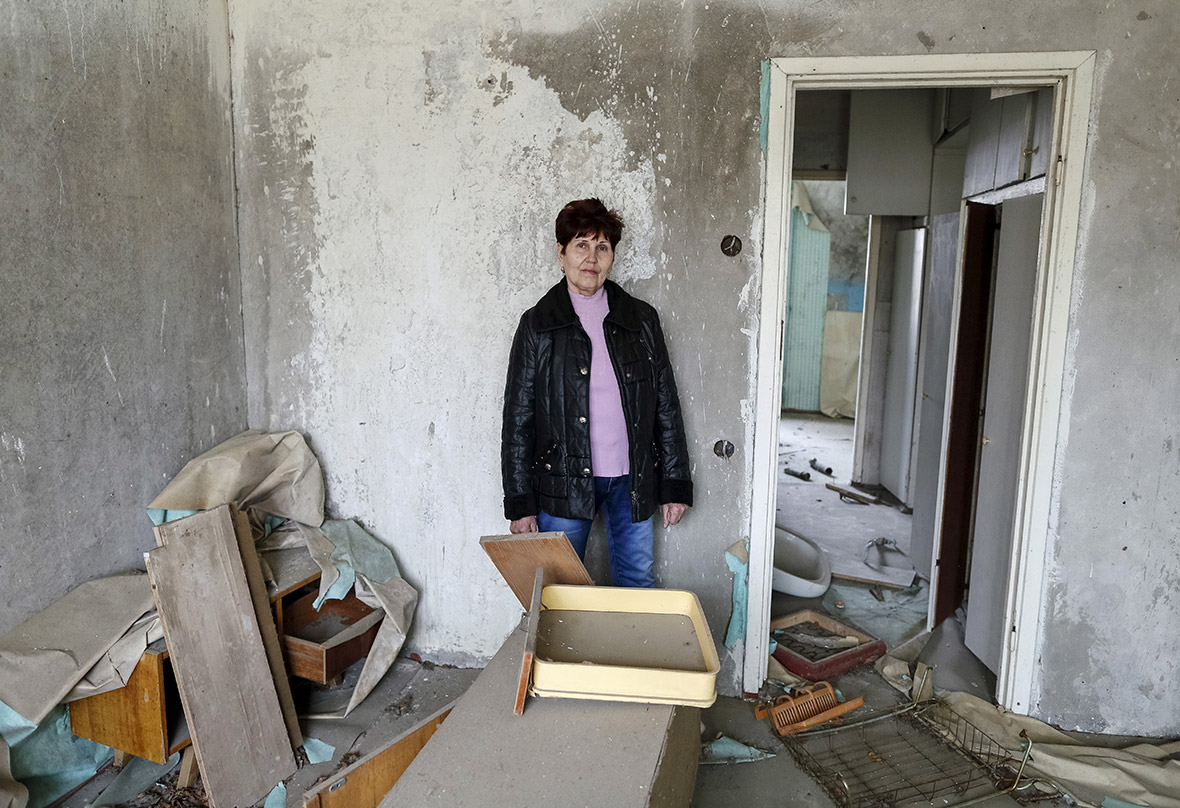Chernobyl: Survivors return to ghost town of Pripyat 30 years after world's worst nuclear disaster
Reuters photojournalist Gleb Garanich photographed the survivors as they visited the ghost town and the dusty derelict flats there that were once home.
Thirty years after the world's worst nuclear disaster, former residents of Pripyat have returned to the abandoned town in the shadow of the Chernobyl nuclear plant. Reuters photojournalist Gleb Garanich photographed the survivors as they visited the ghost town and the dusty derelict flats there that were once home.


On 26 April 1986, technicians at reactor number four of the plant were conducting a systems test when there was a sudden power surge. The reactor's fuel elements broke, leading to a huge explosion and blowing off the reactor's cap. This exposed the graphite covering the reactor to the air, and it ignited. The fire burned for nine days, sending a huge plume of radiation into the environment. It has been estimated that the Chernobyl disaster released 400 times more radioactive material into the atmosphere than the atomic bombing of Hiroshima in 1945. Moscow withheld the truth about the disaster for three days.
Zoya Perevozchenko, now 66, says she only realised something might be wrong that day when her husband, Valeriy, didn't come back from his night shift as a foreman at the stricken reactor. She left her apartment in Pripyat to look for him.
"I remember thinking 'Goodness it's hot' and some people were in masks. But they didn't explain things to us straight away, it was all secret. And the kids were running about barefoot in the puddles," she said.


She found her husband in a local clinic. He had received a fatal dose of radiation that had burnt the skin on his face bright red. He was airlifted to Moscow for treatment, but died 45 days later – one of the 31 to die of acute radiation sickness in the immediate aftermath of the disaster.
Perevozchenko and her two young daughters ended up in Kiev, where they still live. Returning to Pripyat, she found it hard to reconcile the memories of her life there with the derelict ruins of a town abandoned for three decades. "I barely found my apartment, I mean it's a forest now – trees growing through the pavement, on the roofs. All the rooms are empty, the glass is gone from the windows and everything's destroyed," she said.




Residents of Pripyat, a model Soviet town built in the 1970s to house Chernobyl workers and their families, were evacuated a couple of days after the accident. Elena Kupriyanova, 42, was only 12 at the time. Her family and most of the town's 50,000 other residents were transported out of the area in buses and told to pack only the bare essentials because they would only be away for three days. They each took their documents and a small suitcase.
"It was so hot, such beautiful weather. All the fruit trees were in bloom and I thought: what do they mean 'radiation'? It's so nice outside, you can't see anything," Kupriyanova said. "It's very painful that so many people's (lives) were destroyed, that such a beautiful, new town was abandoned. It's hard on the soul," she said.


Valentina Yermakova, 64, says she is angry that many of the belongings they left behind have disappeared. While it is forbidden to remove anything from the radioactive zone, a large amount of portable items have been smuggled out by illegal trophy-hunters and scrap-dealers.
"We locked our apartment when we left. The looters wouldn't have been able to walk in, so they broke the door down," she said. "You go in and it's not that you want to cry, it's more that you get silent and numb from everything you see. The pain, it clenches inside you." But Yermakova, whose husband worked in the plant and died several years later from causes relating to radiation, said even though Pripyat is in ruins it still feels like home. "Walking around, you recognise everything – here's Lenin Street, there's the shop Rainbow. It was a small town, we know the streets by heart."

More than 100,000 people had to abandon the area permanently, leaving native animals the sole occupants of an area of about 2,600 sq km (nearly 1,000 square miles, or roughly the size of Luxembourg).
A 30,000 tonne "safe confinement" arch is being built to prevent more deadly particles spewing from the stricken nuclear reactor's site for the next 100 years. Nevertheless, nothing can be done to decontaminate trees and soil that suffered the worst of the nuclear fallout.
Special government permits, usually valid for a few days, are required for anyone wishing to visit the exclusion zone from the Belarusian side. Roads going into the zone are guarded to prevent any unauthorised person entering. While the rules of access are also strict on the Ukrainian side, small tour groups can visit sites within the zone, including the "ghost town" of Pripyat.





The disaster killed 31 people immediately – almost all of them reactor staff and emergency workers. Between 30 and 50 emergency workers died shortly afterwards from acute radiation syndrome. The long-term effects are not yet known, but a report suggested that the eventual death toll could reach 4,000. Nobody can say for sure when the area will be safe again – some scientists estimate that it could be 20,000 years before people can live near the plant again.
© Copyright IBTimes 2025. All rights reserved.






















